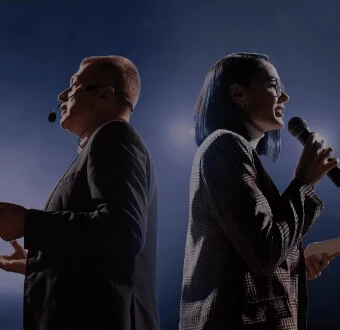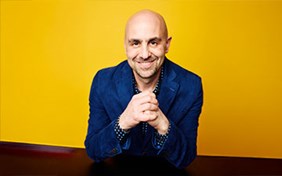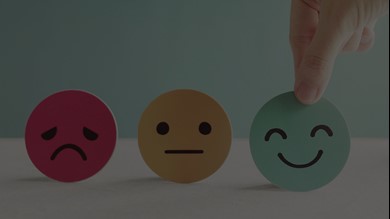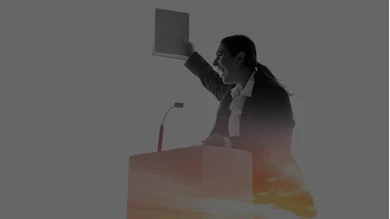We’ve been taught for decades that the way to win in business is simple: lower your price, add new features, or outspend the competition on marketing. But what we’ve been taught is wrong.
In today’s marketplace, price wars are a race to the bottom, and product innovation gets copied almost instantly. The truth is, nearly every company is now selling a commodity – whether they admit it or not.
So why do some brands still rise above the noise while others fade into irrelevance? Because customers don’t talk about transactions. They talk about experiences.
This keynote reveals why the last true differentiator left in business is the one your competitors can’t copy: how you make people feel. And it will leave you WISE to the power of customer experience.
You’ll hear about the state that ranked 50th as a vacation destination and how they turned it around by being Witty. The entertainment powerhouse that used an Immersive experience to create generations of lifelong fans. A restaurant that made its food utterly Shareable without changing the recipe. And why a sparkler is always more Extraordinary than a candle.
It’s not about spending more, adding complexity, or launching massive technology projects. It’s about intentionally designing experiences that are remarkable – worthy of talking about. The result? Your customers become your most powerful marketers. So get ready to see your business through a new lens: the WISE framework for turning every interaction into an opportunity to stand out, inspire conversations, and earn loyalty that money can’t buy.
Are you ready to compete where it actually matters?
Why Every Employee Is in the Customer Experience Business
We all know that support staff are at the forefront of driving great customer experiences. But the one thing that customer-centric companies understand well is that great CX is not the job of customer-facing teams alone—everyone has an equal role to play.
This session will explore how all teams in your organization are in the “customer experience business,” and how driving such a culture forward is key to organizational success.
Your customers don’t care about your organizational chart or which department handles what. They look at your company as a single entity and expect that everyone—from the front-line customer service agent to the legal department to the custodial staff—is focused on making their experience remarkable.
The Complexity Tax: How Customer Frustration Erodes Loyalty And What Smart Brands Do About It (NEW FOR 2026)
We’ve all had that day: We just want to refill a prescription. Or grab a quick bite. Or check a charge on our credit card. But instead, we end up stuck in password purgatory, navigating a fast-food menu with dizzying number of options, and shouting “REPRESENTATIVE!” into a phone system that still doesn’t respond.
None of it is catastrophic. But every little frustrating moment adds up.
That’s the Complexity Tax – the hidden cost of systems, processes, and policies that make life harder for both customers and employees. It doesn’t show up on our balance sheet, but it’s bleeding away loyalty, trust, and growth.
In this candid, fast-paced, and often hilarious keynote, customer experience expert Dan Gingiss exposes how complexity quietly builds in every business despite good intentions. Through real-world stories and examples, Dan introduces the Complexity Tax Framework to help you identify, measure, and eliminate friction points that send your customers running. Because unlike most taxes, the Complexity Tax doesn’t have to be certain. This is one tax you can (and should) avoid paying.
You’ll discover how one tiny website fix eliminated a major customer pain point; a rewards redemption process that failed to ask the one simple question that mattered most; and an insurance policy that people actually wanted to read. And most importantly, you’ll learn how to identify where your organization is accidentally taxing your customers (and what to do to reverse it).
Stop having customers ask, “Why is everything so complicated?” And start having them say, “That was easy!”
Collective Lift: How to Elevate Your Business by Elevating Your Team
We set our quarterly goals, create a bunch of projects and tasks to complete them, and dutifully measure… everything. We’ve got meetings to plan our meetings and spreadsheets to track our dashboards. And at the end of the year, we fill out our performance reviews, calibrate them across the department, and reward the lucky few with the highest scores.
But here’s the thing: we’re stuck in The Optics Trap. It’s the century-old system that rewards what’s easy to count but not what actually counts. Visibility is mistaken for leadership. Rankings look like science but are actually theater. And busyness is celebrated as if it’s an accomplishment. Even 360 Reviews turn office politics into a weapon not a mirror.
The truth is that no performance review, assessment, or ratings system captures the one thing that actually transforms a business: each employee’s Collective Lift.
Collective Lift is the compounding effect of elevating others. Because when the entire team is stronger, we build solid cultures, experience higher retention, and deliver deeper customer loyalty.
It turns out that the most valuable employees are the ones who make everyone around them better.
In this transformative keynote, Dan Gingiss introduces us to the revolutionary power of the Collective Lift Scale. He’ll show you how one employee went from being an isolator to a multiplier (in just 12 minutes a day). You ‘ll meet an enthusiastic recent college graduate whose new job sucked the life out of his Collective Lift (and what he did to restore it). And you’ll meet a software executive that renewed an entire team when he temporarily stepped into a leadership role.
More importantly, you’ll see why five simple weekly tasks will help you grow your career, promote the right people, and elevate your entire business. You ‘ll even see what happens when executives promote team multipliers over top individual performers. And, you ‘ll leave ready to measure your own Collective Lift Score.
Because at the end of the day, “busy” might feel like motion, but Collective Lift delivers momentum.


























